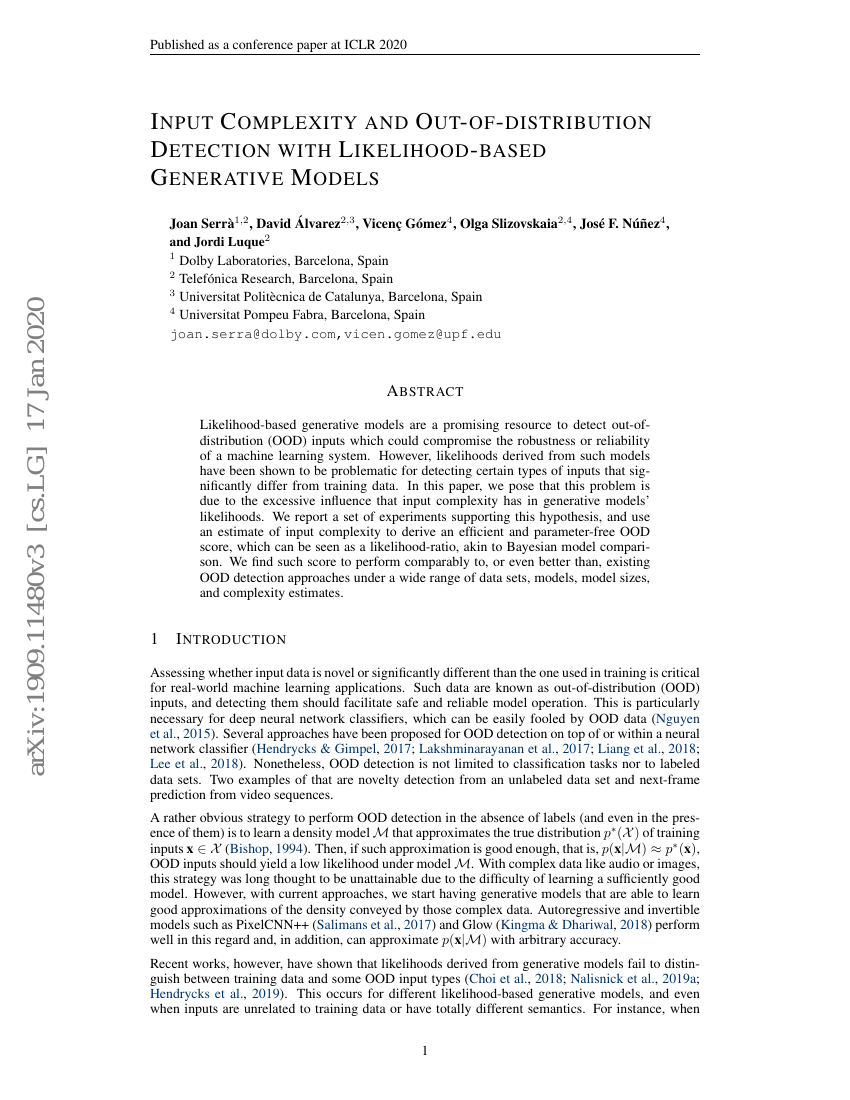Command Palette
Search for a command to run...
Input complexity and out-of-distribution detection with likelihood-based generative models
Joan Serrà David Álvarez Vicenç Gómez Olga Slizovskaia José F. Núñez Jordi Luque

Abstract
Likelihood-based generative models are a promising resource to detect out-of-distribution (OOD) inputs which could compromise the robustness or reliability of a machine learning system. However, likelihoods derived from such models have been shown to be problematic for detecting certain types of inputs that significantly differ from training data. In this paper, we pose that this problem is due to the excessive influence that input complexity has in generative models' likelihoods. We report a set of experiments supporting this hypothesis, and use an estimate of input complexity to derive an efficient and parameter-free OOD score, which can be seen as a likelihood-ratio, akin to Bayesian model comparison. We find such score to perform comparably to, or even better than, existing OOD detection approaches under a wide range of data sets, models, model sizes, and complexity estimates.
Code Repositories
Benchmarks
| Benchmark | Methodology | Metrics |
|---|---|---|
| anomaly-detection-on-unlabeled-cifar-10-vs | Input Complexity (PixelCNN++) | AUROC: 53.5 |
| anomaly-detection-on-unlabeled-cifar-10-vs | Likelihood (Glow) | AUROC: 58.2 |
| anomaly-detection-on-unlabeled-cifar-10-vs | Likelihood (PixelCNN++) | AUROC: 52.6 |
| anomaly-detection-on-unlabeled-cifar-10-vs | Input Complexity (Glow) | AUROC: 73.6 |
Build AI with AI
From idea to launch — accelerate your AI development with free AI co-coding, out-of-the-box environment and best price of GPUs.